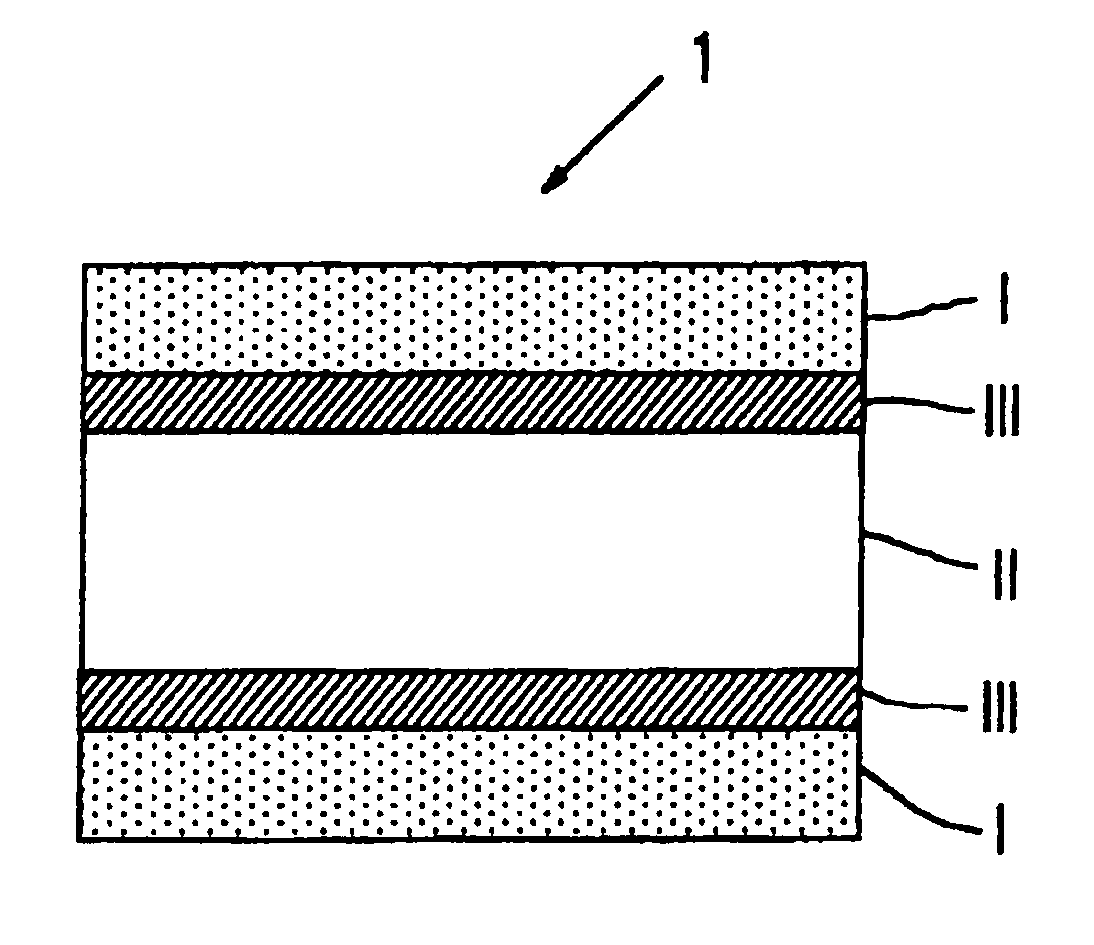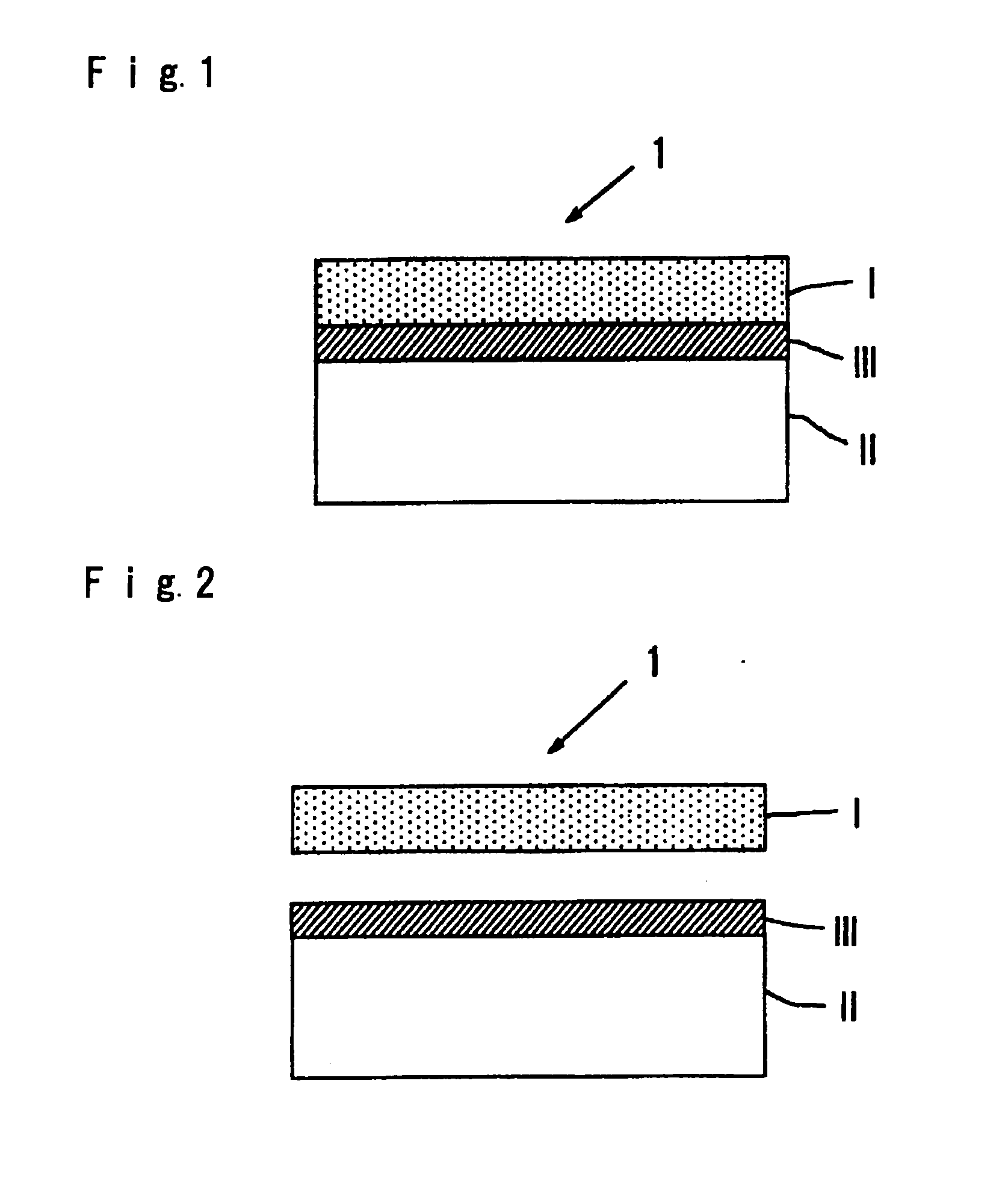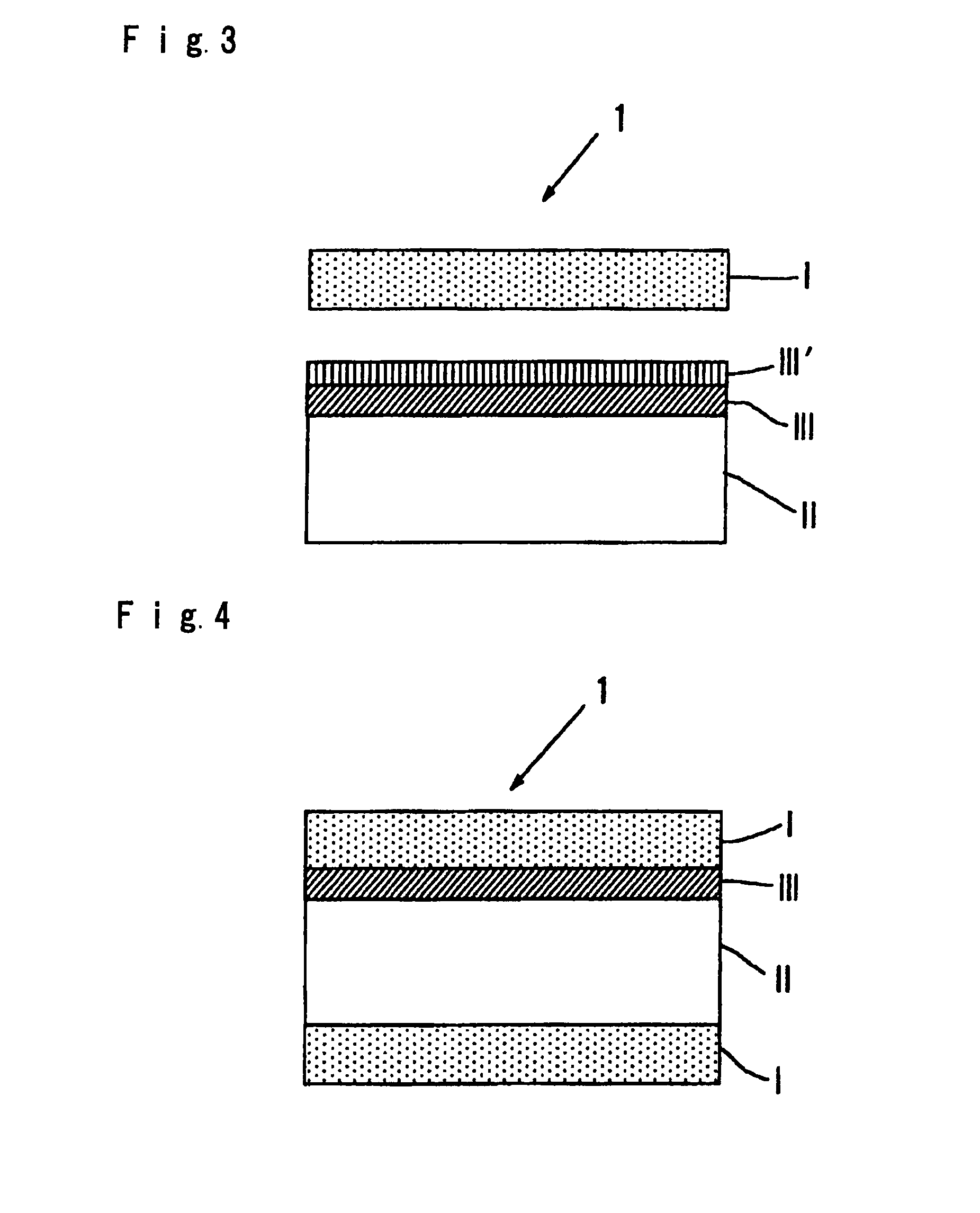Release film for semiconductor resin molds
a technology of semiconductor resin and release film, which is applied in the direction of thin material processing, semiconductor devices, electrical devices, etc., can solve the problems of high amount of gas and low viscosity material formed from the molten mold resin under a high pressure, and insufficient releasability cannot be obtained, so as to prevent mold contamination, effectively suppress mold contamination, and low gas permeability
- Summary
- Abstract
- Description
- Claims
- Application Information
AI Technical Summary
Benefits of technology
Problems solved by technology
Method used
Image
Examples
example 1
[0075](1) As the release layer (I), an ETFE film (manufactured by Asahi Glass Company, Limited, tradename: FLUON ETFE) having a thickness of 12 μm was used. One side (surface (surface to be bonded) facing a support layer) of the ETFE film was treated by corona discharge-treatment with a discharge amount of 40 W·min / m2 to improve the adhesion.
[0076]Further, a 12 μm polyethylene terephthalate film was used as the plastic support layer (II), and on one side of it, alumina was vapor-deposited as a metal oxide to form a gas restraint layer (III). Further, on it, a resin protection layer (III′) was coated to form a film (manufactured by Toppan Printing Co., Ltd., tradename, GX Film).
[0077](2) On the surface of the resin protection layer (III′) of the above film (GX Film), a polyester adhesive was applied to have a film thickness of 0.4 μm as dried, followed by drying, and as shown in FIG. 3, dry-laminating with a release layer (I) was carried out to obtain a release film (hereinafter refe...
example 2
[0084](1) A release film (hereinafter referred to as “release film 3”) was obtained in the same manner as in Example 1 except that a 12 μm ethylene / vinyl alcohol copolymer (manufactured by Kuraray Co., Ltd., tradename: EVAL EF-F) was used as the plastic support layer (II), and on its one side, aluminum was sputtered in a thickness of 10 nm to form a gas restraint layer (III), and no resin protection layer (III′) was formed.
[0085](2) With respect to the release film 3, the xylene gas permeability coefficient in an environment at 170° C. was calculated in the same manner as in Examples. Further, the peel strength was measured by a 180° C. peel test in the same manner as in Example 1.
[0086]The xylene gas permeability coefficient of the release film 3 was 1×10−16 (kmol·m / (s·m2·kPa)), the peel strength by a 180° peel test was 0 (N / m). The result is shown in Table 1.
[0087](3) Further, in the same manner as in Example 1, a mold shot was repeatedly carried out by using the release film 3, a...
PUM
| Property | Measurement | Unit |
|---|---|---|
| arithmetic surface roughness | aaaaa | aaaaa |
| elongation | aaaaa | aaaaa |
| surface roughness | aaaaa | aaaaa |
Abstract
Description
Claims
Application Information
 Login to View More
Login to View More - R&D
- Intellectual Property
- Life Sciences
- Materials
- Tech Scout
- Unparalleled Data Quality
- Higher Quality Content
- 60% Fewer Hallucinations
Browse by: Latest US Patents, China's latest patents, Technical Efficacy Thesaurus, Application Domain, Technology Topic, Popular Technical Reports.
© 2025 PatSnap. All rights reserved.Legal|Privacy policy|Modern Slavery Act Transparency Statement|Sitemap|About US| Contact US: help@patsnap.com



